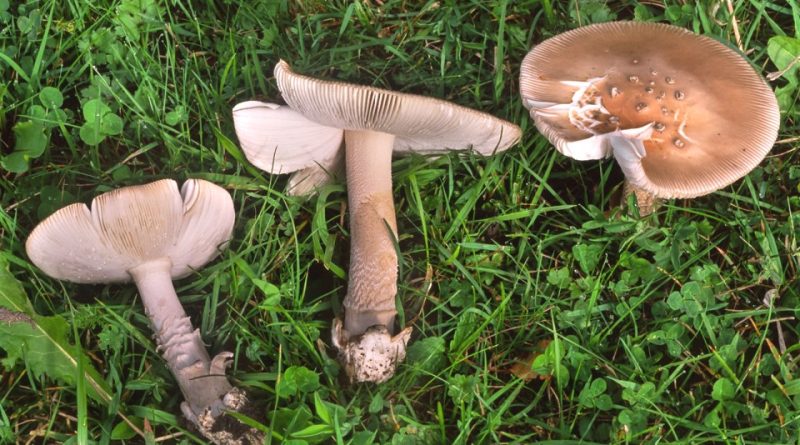Amanita lividopallescens
Amanita lividopallescens
The pale Amanita (Amanita lividopallescens (Secr. ex Boud.) Kühner & Romagn. 1931) is a mushroom belonging to the Amanitaceae family.
Systematics –
From a systematic point of view it belongs to:
Eukaryota domain,
Mushroom Kingdom,
Basidiomycota division,
Subdivision Agaricomycotina,
Class Agaricomycetes,
Subclass Agaricomycetidae,
Order Agaricales,
Family Amanitaceae,
Genus Amanita,
Species A. lividopallescens.
The term is basionym:
– Amanitopsis lividopallescens Secr. ex Boud..
The terms are synonyms:
– Amanita lividopallescens (Boud.) Kühner & Romagn.;
– Amanita lividopallescens (Secr. ex Boud.) Kühner & Romagn. 1953.;
– Amanita lividopallescens (Secr. ex Gillet) Boud. 1905.;
– Amanitopsis lividopallescens Secr..
Etymology –
The term Amanita comes from the Greek Ἀμανὶτης [Amanitos], i.e. mushroom of Mount Amano, from Ἄμανος [Amanos], Amano, chain of mountains between Cilicia and Syria, in Asian Turkey, where this species seems to have been abundant in antiquity.
The specific epithet lividopallèscens is an invariant adjective of the second class, composed of the adjective of the first class lividus,-a,-um, “livid, dull, blackish, purple” and of pallèscens present participle of the inchoative verb of the third co -nigation pallèscere, which means “to become pale, to turn pale”, for the color of the hat.
Geographic Distribution and Habitat –
Amanita lividopallescens is a fungus of the Vaginatae section that can grow in habitats with the presence of Quercus spp., Betula pendula, Corylus avellana and other deciduous trees.
This mushroom is uncommon, which can be found in the period between summer and early autumn.
Recognition –
Amanita lividopallescens is an uncommon mushroom that is recognized for having a hat of 60-110 mm in diameter. The shape of the hat is first bell-shaped-convex, then convex, and finally flat, with a slightly obtuse umbo. This has a variable color and uniform shades, whitish, pale-grey, beige-grey, pale-ochre-grey, regular margin, clearly streaked.
The lamellae are free, quite dense, ventricose, interspersed with lamellulae, white, whitish-cream, flaky, concolorous lamellar thread.
The stem is 90-120 mm, cylindrical in shape, slender, widened at the base, filled with pith then hollow, dry, white, smooth, later decorated with flakes and veil remains concolorous with the cap.
The ring is absent.
The volva is fragile, membranous, sheathing, approximately saccular, of a white, whitish colour, often with ocher shades.
The flesh is immutable white, firm in young specimens, tender and soft with age, fragile. It has a light, pleasant smell and a sweetish taste.
Chemical reactions: non-amyloid spores in contact with Melzer’s reagent.
Cultivation –
Amanita lividopallescens is a mushroom which, although edible after cooking, is not among the cultivated ones.
Customs and Traditions –
The Amanita lividopallescens belongs to the section Vaginatae (formerly Amanitopsis = Amanite without ring), not very common, but easy to recognize due to its generally always clear colouration, due to an early fragile volva and a stem with concolorous scaling, which distinguish it from the A .vaginata.
As regards the possible confusions in recognition, it is difficult to distinguish with Amanita beckeri and Amanita malleata which have a very similar appearance, robustness and pileic pigmentation. An element of distinction could be represented by the volva, which in Amanita lividopallescens is usually more sac-shaped than that of the other two amanitas, in which, however, it is more friable, but only microscopic analysis can remove any doubt.
A. lividopallescens is an infrequently found mushroom which, however, is edible only after cooking.
Method of Preparation –
Amanita lividopallescens is an edible mushroom only after cooking.
However edibility is obtained after cooking with temperatures of 70-80 °C, which allows to dissolve the toxic substances (haemolysins) it contains.
However, it is advisable not to collect this mushroom due to its uncommon growth.
Guido Bissanti
Sources
– Wikipedia, the free encyclopedia.
– GBIF, the Global Biodiversity Information Facility.
– Useful Tropical Plants Database.
– Cetto B., 2008. Mushrooms from life, Saturnia, Trento.
– Pignatti S., 1982. Flora of Italy, Edagricole, Bologna.
– Conti F., Abbate G., Alessandrini A., Blasi C. (ed.), 2005. An annotated checklist of the Italian vascular flora, Palombi Editore.
Photo source:
– https://www.artportalen.se/MediaLibrary/2017/1/cff736f6-3348-4b98-b4ea-17c070324a0f_image.jpg
Attention: The pharmaceutical applications and alimurgical uses are indicated for informational purposes only, they do not in any way represent a medical prescription; we therefore decline all responsibility for their use for curative, aesthetic or food purposes.


